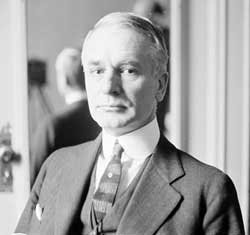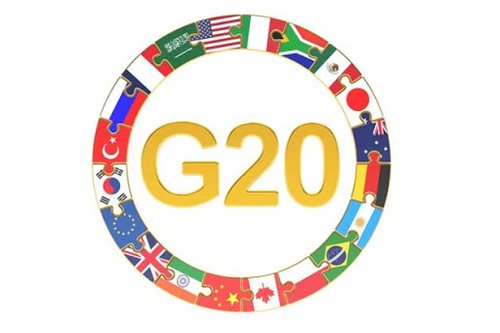Could A New Bretton Woods Agreement Contribute To Global Economic Recovery?
Friday, 08 May 2020By Bob McDowall
This article briefly examines the role that a new Bretton Woods Agreement might play in re-establishment of an international financial architecture to support global economic and Financial recovery from the damage inflicted by measures to mitigate the health impact of Covid-19.

Governments and institutions are beginning to prepare for the resumption of economic and financial recovery, once lockdown measures ease. Although as yet unquantified, it is likely that the magnitude and scale of economic and financial damage with be enormous.
Global co-operation by Governments will be necessary to accelerate recovery, and to ensure excessive competition does not get in the way. Could a New Bretton Woods agreement contribute to global economic and financial recovery, in a way that not only recognises its finite operation but also includes criteria which lead to an orderly dissolution once its work is done?
What Was The Bretton Woods Agreement?

The Bretton Woods system was created in July 1944 at a global conference organised by the US Treasury in Bretton Woods, New Hampshire. The Articles of Agreement were drawn up in July of that year, after the Allies had invaded France, a full 10 months before the surrender of Germany)
The system was created in order to develop a new international monetary order which would avoid the perceived problems of the interwar period, (protectionism, tactical devaluations, hot flows of money across borders and unstable exchange rates) which were believed to have contributed to the collapse of the Weimar Republic and the rise of Nazism.
The system sought to provide a framework of monetary and financial stability to foster global economic growth and the growth of international trade. Bretton Woods was a compromise solution, that lay between the fixed exchange rates of the gold standard (seen as conducive to rebuilding the network of global trade and finance), and the greater flexibility to which countries had resorted in the 1930s to restore and maintain domestic economic and financial stability.
The compromise created an adjustable peg system based on the US dollar, convertible into gold at $35 per ounce, accompanied by capital controls. The solution gave members exchange-rate stability, and the independence for their monetary authorities, which would enable them to maintain full employment.
The International Monetary Fund (IMF) was established to provide relief for temporary current account shortfalls, based on the principle of a credit union, whereby members could withdraw more than their original gold quotas.
The International Bank for Reconstruction and Development subsequently renamed the World Bank was created at the same time to provide loans and grants for poorer countries to establish capita projects. However, despite its conception in the mid 1940’s, Bretton Woods did not become fully operating until the late 1950s as there was no definitive timetable for its implementation.
Why Did The Bretton Woods Agreement Cease?

The Bretton Woods agreement evolved into a gold-dollar standard. Almost inevitably the three big problems of the interwar gold exchange standard re-emerged: adjustment, confidence, and liquidity.
Bretton Woods depended upon the stability of economic policy in the United States, which became increasingly unstable after 1965 when public expenditure began to increase, without a commensurate rise in taxation (a consequence of President Johnson’s social expenditure, and the rapid escalation of the Vietnam war).
Domestic prices rose and U.S. goods became less competitive. So while the U.S. was playing the role of the world’s central banker by exporting dollars, the rest of the world began to grow, challenging U.S. trade competitiveness.
US monetary authorities began to worry about the balance of payments deficit. Official dollar liabilities held abroad mounted as deficits built up, and the likelihood that these liabilities would be converted into gold, drawn from US gold stocks increased. It was realised that US gold stocks would eventually reach a point low enough to trigger a run.
Indeed by 1959, the US monetary gold stock equalled total external dollar liabilities, and the rest of the world’s monetary gold stock exceeded that of the US. By 1964, official dollar liabilities held by foreign monetary authorities exceeded that of the US monetary gold stock
The Bretton Woods system then broke down because of its fundamental flaw of pledging convertibility to gold, but given the path of the U.S.A economic policy in the 1960s, the system simply could not be sustained. As the supply of dollars increased, the ability of the U.S.A. to convert the currency back into gold decreased.
This culminated in President Nixon decision, in August 1971, to suspend convertibility to gold. A demonstration of U.S. dominance was the demand that that other countries revalue their own currencies, or risk trade tariff sanctions.
What Would A New Bretton Woods Type Agreement Look Like?

A new Bretton Woods agreement would symbolise global co-operation, at a time when the world’s economy has suffered its greatest blow since the great depression. Although caution should be applied in making historic comparisons, enabling nations to avoid economic collapse could stem the tide of populism and reduce the risk of conflict.
However, in contrast to the original Bretton Woods agreement, which vested enormous power in the hands of one nation, the United States, members of the G20 should reaffirm the fundamental role they play in delivering development and financial stability – something that, to date, G20 Members have found difficult to acknowledge (at least publicly).
The G20 currently provide oversight of the institutions which would operate a new agreement - the IMF and the World Bank. The burden of responsibility for ensuring these institutions remain central to the global architecture resides, at least initially, with advanced economies, in particular the advanced economy G20 members.
Such an agreement would give renewed focus and purpose to the IMF and the World Bank. Their core function disappeared when the Bretton Woods agreement ceased, and both institutions have both been looking searching for purpose since 1971 (with very limited success).
In contrast to the original Bretton Woods Agreement, which took a decade and a half to get off the ground, a firm timetable should be set for its implementation. Bold words and aspiration must be translated into detailed implementation plans.
Conversely it has to be recognised that a new agreement should have a limited lifespan. The types of pressures which led to the abrupt cessation of the Bretton Woods Agreement in 1971 have to be monitored. Similar pressures should trigger a measured and structured deconstruction of The Agreement, though criteria to determine its winding up would have to be agreed, these would be subject to periodic review and plans drawn up for an orderly dissolution.
In a perfect world the IMF and World Bank would not have to lend any money, but that is highly unlikely. Some metrics of success would include effective policy advice and surveillance on sustainable, inclusive growth, which could prepare the world for future crises.
What Are The Principles Challenges To Creating Of A New Bretton Woods Agreement?
- Agreement by G20 nations that that global co-operation is essential and mutually advantageous
- Without the support of the USA and China any Agreement would have limited scope and uptake.
- Individually or collectively China and the USA would have to provide the reserve currency for the system to operate through some agreed aggregation or basket. From China’s perspective, the Agreement would accelerate China’s longer-term aspiration to establish the renminbi as a reserve currency. Any such aspiration would be aggressively resisted by the USA. Its current President would be apoplectic in resistance to what he terms China’s currency manipulation. However at January 2020 China (US$1.08 trillion) and Japan(US$ 1.12 trillion) own one third of the foreign holdings (US$ 6.78 trillion) of US Treasury Debt (US$24.1 trillion).
- Capital controls, designed to prevent erratic flow of “hot money” are a necessary ingredient of an Agreement would meet very strong resistance from financial institutions. Without sophisticated and draconian sanctions on both individuals and the controllers of financial institutions, the complexity of technology and the opacity of some jurisdictions and synthetic and digital currencies, will make transgressions difficult to monitor and exhaustively enforce.